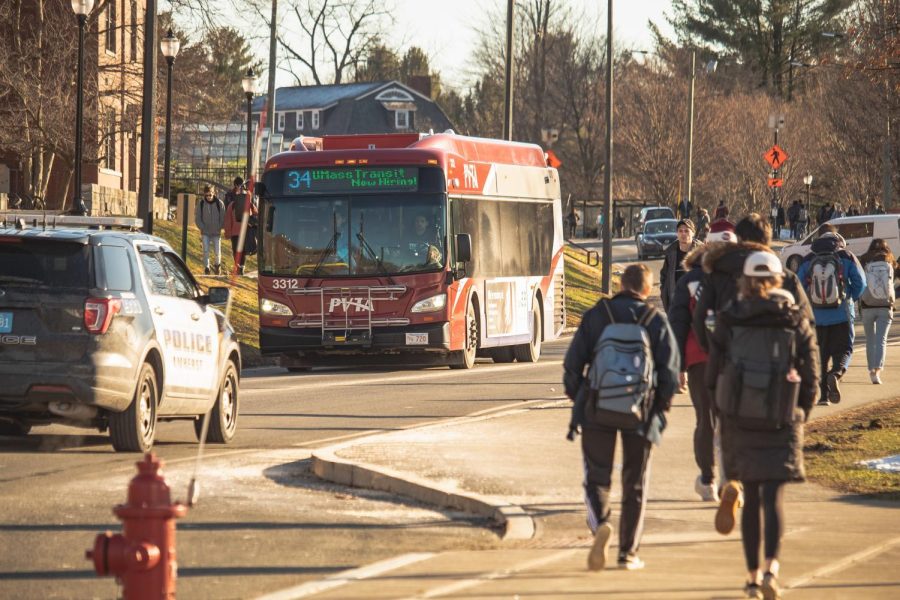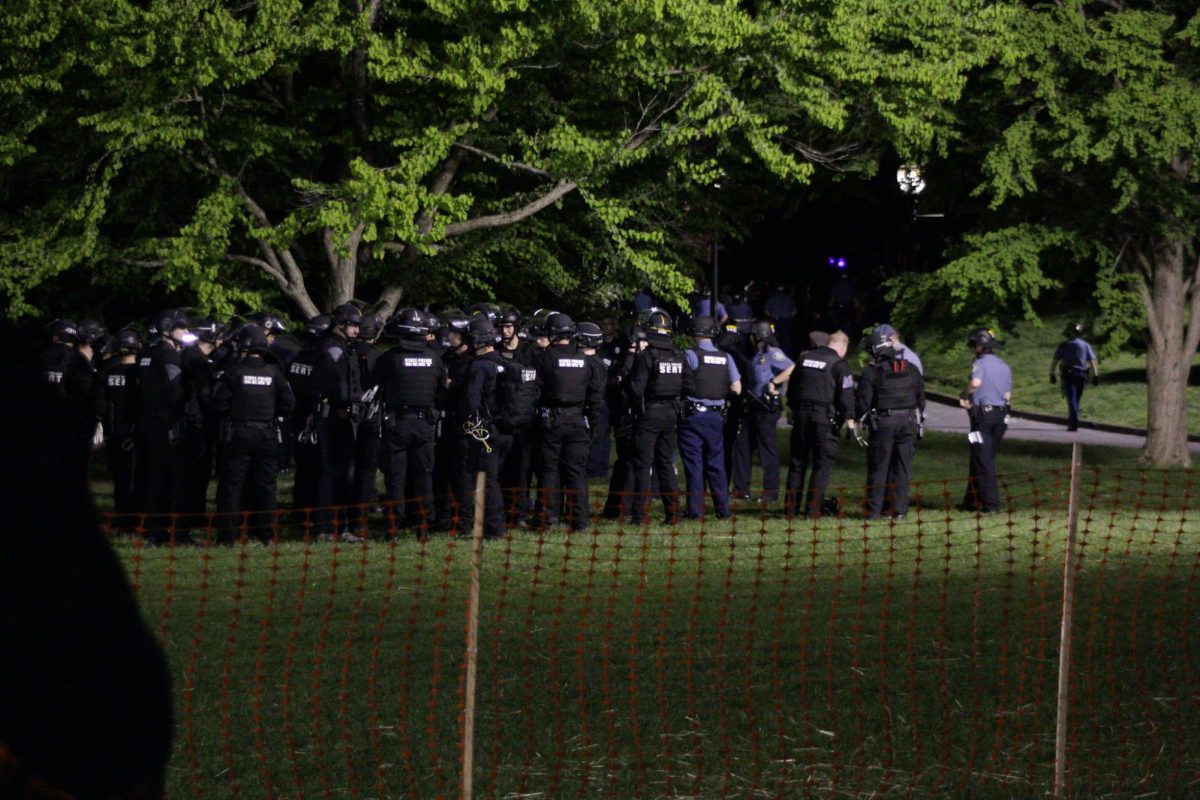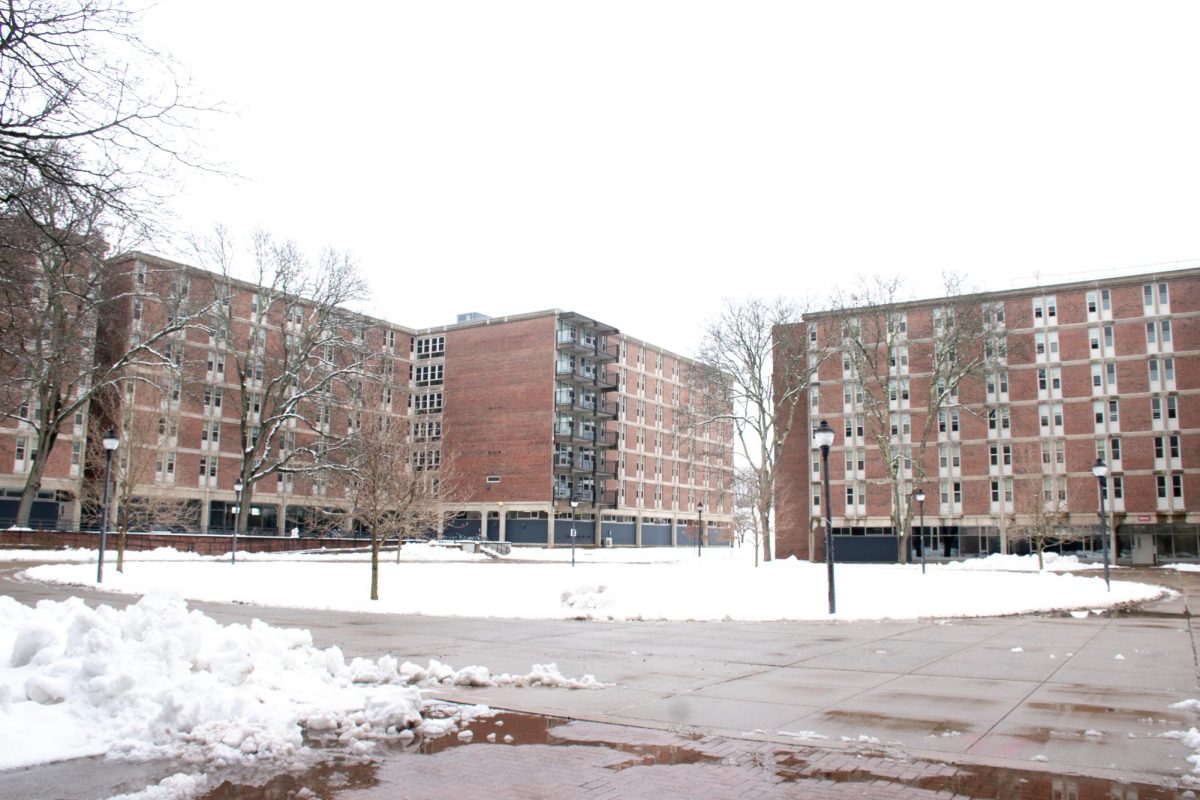Anyone who has ever navigated the segment of North Pleasant Street that crosses through the University of Massachusetts has felt the anxiety of simultaneously dodging pedestrians crossing at frequent intervals, watching for bikers and avoiding collisions with the car in front of them doing the same.
Traffic through this main roadway on campus is notorious for bringing frustration to both student pedestrians as well as vehicular traffic, especially the local PVTA bus system. It can take an extra ten minutes to navigate through the half mile stretch of North Pleasant Street running through campus during busy times of day. Especially when alternative routes such as Commonwealth Avenue and East Pleasant Street exist.
Throughout my time at UMass, I have heard frequent complaints from friends and peers who have attempted to drive through campus during busy times of day, most notably the time between classes. Many who raise complaints, however, may not be aware of the constraints surrounding North Pleasant Street that cannot be overcome by simply adding conventional roadway infrastructure like stop lights or flashing pedestrian beacons. Such infrastructure already exists on Commonwealth Avenue near the Mullins Center. This roadway requires a much more drastic solution, and one that UMass is not logistically prepared to implement now.
While roads like Commonwealth Avenue are designed for higher vehicle speeds and lower pedestrian volumes, North Pleasant Street was designed with the knowledge that it would service the needs of a large amount of pedestrian traffic. This intention is shown mainly through the prevalence of many crosswalks spaced relatively close to one another, as well as in narrower streets which force drivers to slow down as opposed to wider roads like Commonwealth Ave.
Adding signal lights or flashing pedestrian beacons would force cars to stop for pedestrians but could cause equal traffic to build up. Beyond traffic, this would likely lead to dissatisfaction from drivers who would be forced to a standstill between classes, as they are now, when students incessantly cross the street.
It is inevitable that in any area with a high pedestrian population, such as walkable cities and college campuses, roadways will become congested during the peak hours of day. Students at UMass, when compared to students in other high pedestrian density areas such as cities, are also particularly accustomed to crossing at their leisure without the delay of a pedestrian walking period that are the norm in cities like Boston and New York.
The implementation of new types of infrastructure to North Pleasant would likely yield a low rate of compliance; most students would simply ignore the new lights and cross at random anyway. I have seen this behavior at the pedestrian beacon near the Design Building, and it possibly causes equal or more risk than if cars were expecting to yield to pedestrians at these locations.
The main problem with North Pleasant Street lies not in the road’s infrastructure, but in the density of students crossing at a given time as well as the volume of cars that commute through this “walkable” campus. Without making the street completely walkable, the only way to truly solve the congestion is to significantly lower or divert the volume of students or cars.
With UMass admitting more students each year, traffic is bound to continue to be an issue. One solution to the congestion of North Pleasant would be to encourage drivers to take a detour down Commonwealth Avenue or up East Pleasant during intervals of time when classes are changing. This would decrease the vehicles traveling through campus whose destination is not a building directly located off of North Pleasant Street.
The street’s traffic hazards need to be addressed, but UMass should focus first on decreasing the number of users of the roadway rather than adding unnecessary roadway infrastructure that won’t get to the root of the issue.
Alanna Joachim can be reached at [email protected].



















